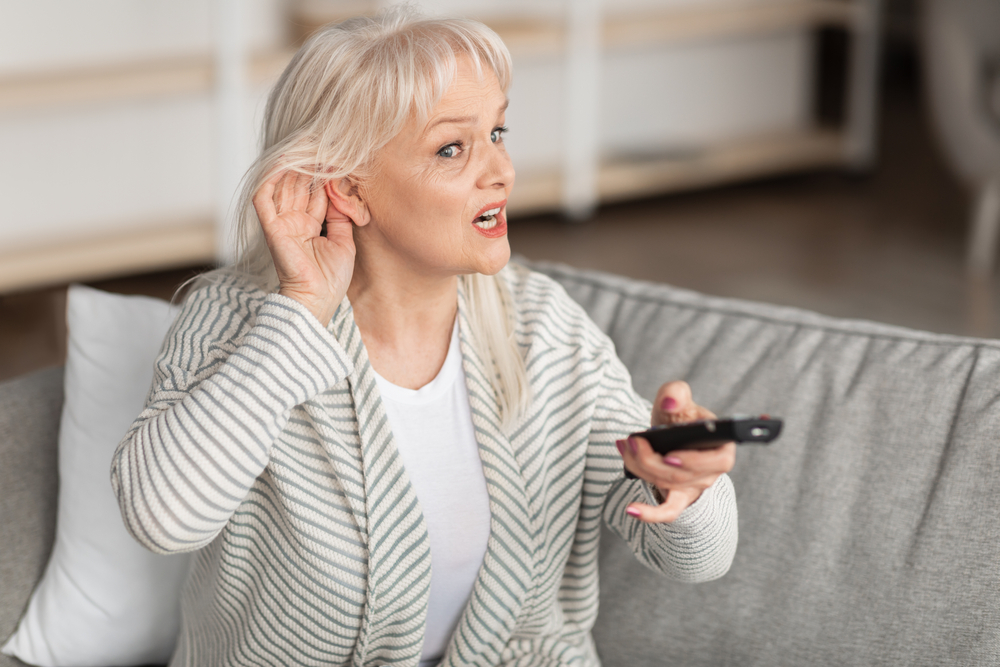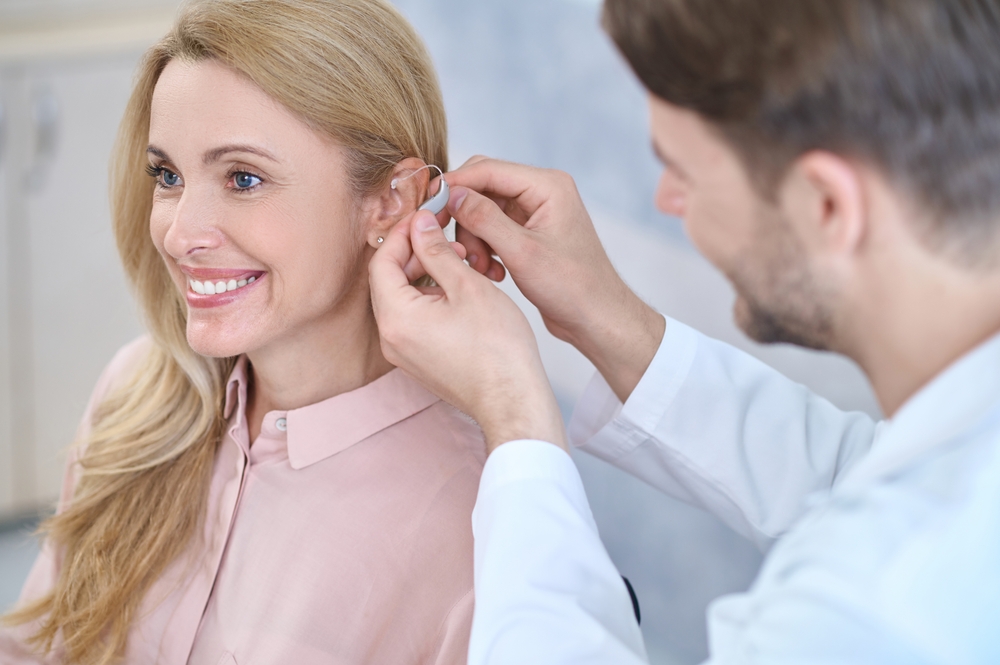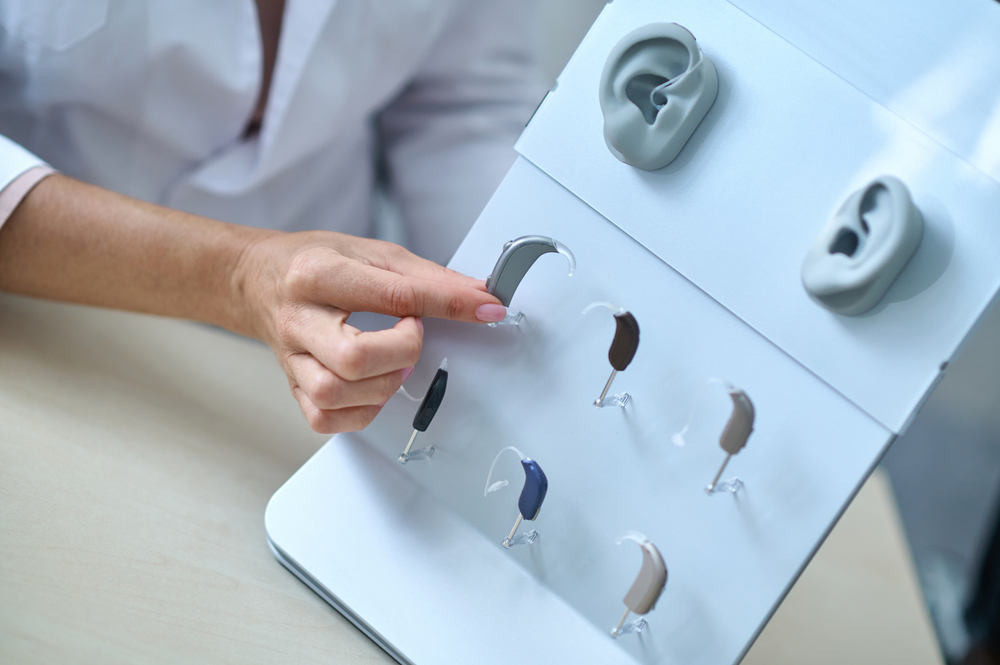Expert Audiologists in Baltimore
What is Hearing Loss?
Hearing loss is the partial or total inability to hear. This condition can be mild, moderate, severe, or profound and affects one or both ears.
Usually, people notice hearing loss because it is more difficult to understand a conversation around them, or they cannot hear things they once could.
Do I Have Hearing Loss?
Approximately 20% of all Americans have hearing loss to some degree. While hearing loss more frequently impacts older adults, it can occur in people of all ages, including infants and children.

Hearing loss can be temporary (because of acute problems like infection or blockage) or permanent. If you suspect that you have hearing loss, you may notice things like:
- It is harder to follow conversations, especially in noisy places
- You ask people to repeat themselves more often
- Everyone seems to be mumbling
- You’ve been told you are speaking too quietly or too loudly
- You’ve been told you have the TV on too loudly
The only way to know for sure if you have hearing loss is to be evaluated by an audiologist. Maryland ENT’s audiologists offer comprehensive evaluations for people who suspect they have hearing loss.
How is Hearing Loss Diagnosed?
Depending on your symptoms, history, and other factors, one of our audiologists will determine which of the following methods are necessary for your evaluation:
- Physical examination of the ear
- Audiometry
- Tympanometry
- Otoacoustic emissions testing
- Tinnitus evaluation
What Causes Hearing Loss?
Your ear has three parts: the outer ear, the middle ear, and the inner ear. The ear works like a funnel, transferring sound from the outer ear through the middle ear and into the inner ear.
The inner ear then transmits the sound message to the brain. Problems in any of these areas can lead to hearing loss.
Injuries to the outer ear, congenital disabilities, ear wax build-up, or other obstructions may cause problems with hearing. These problems impact hearing because they close off the outer ear and prevent sound from traveling to the middle and inner ear.
Fluid or infection in the middle ear restricts the eardrum and ossicles from moving correctly, causing hearing loss. Inner ear infections, viruses or bacterial infections, Meniere’s disease, noise exposure, and abnormalities present at birth can also lead to hearing loss that originates in the inner ear and problems with balance.
What are the Different Types of Hearing Loss?
Conductive hearing loss is any hearing loss in which sound is restricted from moving from the outer ear to the middle ear. It can be temporary or permanent.
Sensorineural hearing loss occurs when there is damage to the inner ear. It usually results in permanent damage.
Mixed hearing loss is when a person experiences both conductive and sensorineural hearing loss.
What is Tinnitus?
Tinnitus is the term for a perceived sound that has no known source. Frequently described as “ringing in the ears,” tinnitus can also sound like whooshing, buzzing, or other sounds.
Your audiologist at Maryland ENT can diagnose and treat this condition.
Will I Need Hearing Aids?

Depending on the results of your evaluation, you may need hearing aids. If so, our audiology team is equipped to complete a hearing aid evaluation and fitting.
We provide comprehensive care for our patients with hearing aids and will continue to provide hearing aid servicing and repairs after they have been fitted.
After receiving your hearing aids and having them fitted, you can come back for any servicing, cleaning, questions, or updates necessary in the future.
What Can I Do to Hear Better if I Have Hearing Loss?
When you have hearing loss, the best thing to do is follow your audiologist’s recommendations and wear your hearing aids. The audiologists at Maryland ENT are highly trained professionals who find the best hearing aid to meet your needs.
Maryland ENT offers the following hearing aids to our patients:
Behind-the-Ear (BTE)
Behind-the-ear hearing aids rest on the back of the ear and are durable.
In-the-Canal (ITC)
In-the-canal hearing aids fit in the ear canal.
In-the-Ear (ITE)

In-the-ear hearing aids fit in the outer ear.
Completely-in-the-Canal (CIC)
Completely-in-the-canal hearing aids are small and completely in the canal of the ear.
Invisible-in-the-Canal (IIC)
Invisible-in-the-canal hearing aids are virtually invisible in the ear canal, meaning nobody has to know you’re wearing a hearing aid except for you.
Open-Fit BTE: (Open-Fit Behind-The-Ear)
Open-fit BTE hearing aids rest on the back of the ear. They are connected to the ear canal by a thin tube.
If you have been prescribed medication to help with your hearing loss (such as an antibiotic or decongestant for an ear infection), consistently take your medication as prescribed.
Assistive Listening Devices (ALDs)
You may also consider Assistive Listening Devices (ALDs) to support improved hearing in various environments and situations. Assistive listening devices bridge the gap between the sound source (like the TV) and the listener. These are some of the ALDs our team can support you with:
- Wireless connectivity
- Phone streaming
- iPhone or Android streaming
- Television streaming
- Personal FM systems
- Telecoil/loop connectivity
Sometimes, your audiologist may recommend a surgical procedure to improve your hearing. Some surgical procedures offered at Maryland ENT to treat hearing loss include:
Myringotomy
Myringotomy is a procedure that drains fluid from the eardrum to improve hearing and restore hearing loss caused by fluid build-up.
Stapedectomy
During a stapedectomy, the stapes ossicle in the ear is replaced with a prosthetic to treat hearing loss caused by otosclerosis.
Tympanoplasty
A tympanoplasty is a procedure that repairs or replaces an eardrum, which can help improve hearing loss due to a hole in the eardrum that won’t heal on its own.
Bone-Anchored Hearing Aid (BAHA) Implantation Surgery
A bone-anchored hearing aid is an electronic device with an internal vibration receiver surgically implanted with a sensor worn against the skull.
Many patients are candidates for aural rehabilitation services. These are a special kind of therapy that helps people re-learn how to listen after having hearing loss, ear surgery, or other medical circumstances.
This is usually conducted by an audiologist or speech-language pathologist.
How Can I Protect My Hearing?
We provide custom recreational and professional ear protection, significantly reducing noise-related hearing loss risks. Custom earmolds are made so that the ear protection is designed to fit you perfectly.
We also create custom earmolds for our patients’ hearing aids, swimming earplugs, and music earbuds.
Make sure you can hear the world around you by scheduling an audiology appointment at Maryland ENT in Lutherville and Baltimore, MD, today!



